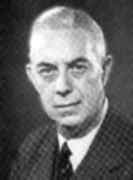Person: Pol, Balthasar van der

Balthasar van der Pol was a Dutch physicist famous for the non-linear van der Pol equation.
Mathematical Profile (Excerpt):
- In 1916 van der Pol went to study with John Ambrose Fleming, an English electrical engineer and physicist who was Pender Professor at University College London.
- After a year working with Fleming, van der Pol remained in England, but went to Cambridge to work with John Joseph Thomson at the Cavendish Laboratory.
- He was President of the Royal Society during the years that van der Pol worked with him.
- During his time at the Cavendish Laboratory between 1917 and 1919, van der Pol met and became friends with Edward Appleton who, thirty years later in 1947, was awarded the Nobel Prize of Physics for his contributions to understanding the ionosphere.
- In his theoretical work van der Pol gave a quantitative proof that, if one neglected the influence of a reflecting layer, experiment and theory were in flagrant disagreement in the case of long-distance propagation.
- To do this van der Pol familiarised himself with the theoretical work on the diffraction of radio waves round a conducting earth and used this to make a direct comparison between (a) signal strength predicted and (b) signal strength received, in a practical case of radio transmission.
- In this work van der Pol showed great experimental skill.
- Van der Pol's work on relaxation oscillations was, of course, entirely his own.
- Although most of the work for van der Pol's doctoral thesis was undertaken at Cambridge, his thesis supervisor was Willem Henri Julius, director of the Physics Laboratory of the University of Utrecht, described by Einstein as 'one of the most original exponents of solar physics'.
- On returning to the Netherlands in 1919, van der Pol was appointed to the Teylers Museum in Haarlem named after Pieter Teyler van der Hulst, a wealthy 18th century cloth merchant.
- An Amsterdam banker of Scottish descent, Teyler had bequeathed his fortune for the advancement of art and science.
- Hendrik Lorentz had been appointed director of research at Teylers in 1910 and under his leadership Teylers Museum conducted research in optics, electromagnetism, radio waves and atomic physics.
- It was an ideal environment for van der Pol who completed his doctoral thesis De invloed van een geioniseerd gas op het voortschrijden van electromagnetische golven en toepassingen daarvan op het gebied der draadlooze telegraphie en bij metingen van glimlichtontladingen Ⓣ(The effect of an ionised gas on electro-magnetic wave propagation and its application to radio, as demonstrated by glow-discharge measurement) and submitted it to the University of Utrecht.
- In 1922 van der Pol left Teylers Museum to take up an appointment as Head Physicist at Philips Physical Laboratory in Eindhoven.
- The physics research laboratory to which van der Pol was appointed had been founded in 1914.
- Van der Pol later became Director of Scientific Radio Research.
- In 1927 he was made a Knight of the Order of Oranje Nassau for establishing the first radio-telephonic communication between the Netherlands and the Dutch East Indies.
- Let us look at some of van der Pol's scientific contributions.
- Let us look first at the last of these topics on which Bremmer and van der Pol collaborated in writing the classic text Operational Calculus: Based on the Two-Sided Laplace Integral.
- They seem to feel that on the one hand modern applications of the operational calculus require theorems under rather general conditions, and on the other hand the readers they have in mind are not interested in, or not able to follow, proofs under such general conditions.
- The mathematical treatment is more advanced than in most other books devoted primarily to applications, and on this account the work is not suitable as a text-book except for a graduate course for engineers or physicists of unusually strong mathematical background ...
- Of course, to most mathematicians the name of van der Pol is associated with the differential equation which now bears his name.
- The first observation of the inapplicability of the linear theory to problems of this type was made in radio-engineering by van der Pol.
- We mentioned above that van der Pol was interested in number theory.
- In it he combined his knowledge of radio technology and number theory to advantage.
- His published work on this subject is contained in four papers; mention should also be made of his highly individual 'Lectures on a modern unified approach to elliptic functions and elliptic integrals' (mimeographed notes) given at Cornell University in 1958.
- He was a Founder-member of the Nederlandsch Radiogenootschap, for a time its President, and later an honorary member.
Born 27 January 1889, Utrecht, The Netherlands. Died 6 October 1959, Wassenaar, The Netherlands.
View full biography at MacTutor
Tags relevant for this person:
Origin Netherlands
Thank you to the contributors under CC BY-SA 4.0! 

- Github:
-

- non-Github:
- @J-J-O'Connor
- @E-F-Robertson
References
Adapted from other CC BY-SA 4.0 Sources:
- O’Connor, John J; Robertson, Edmund F: MacTutor History of Mathematics Archive
